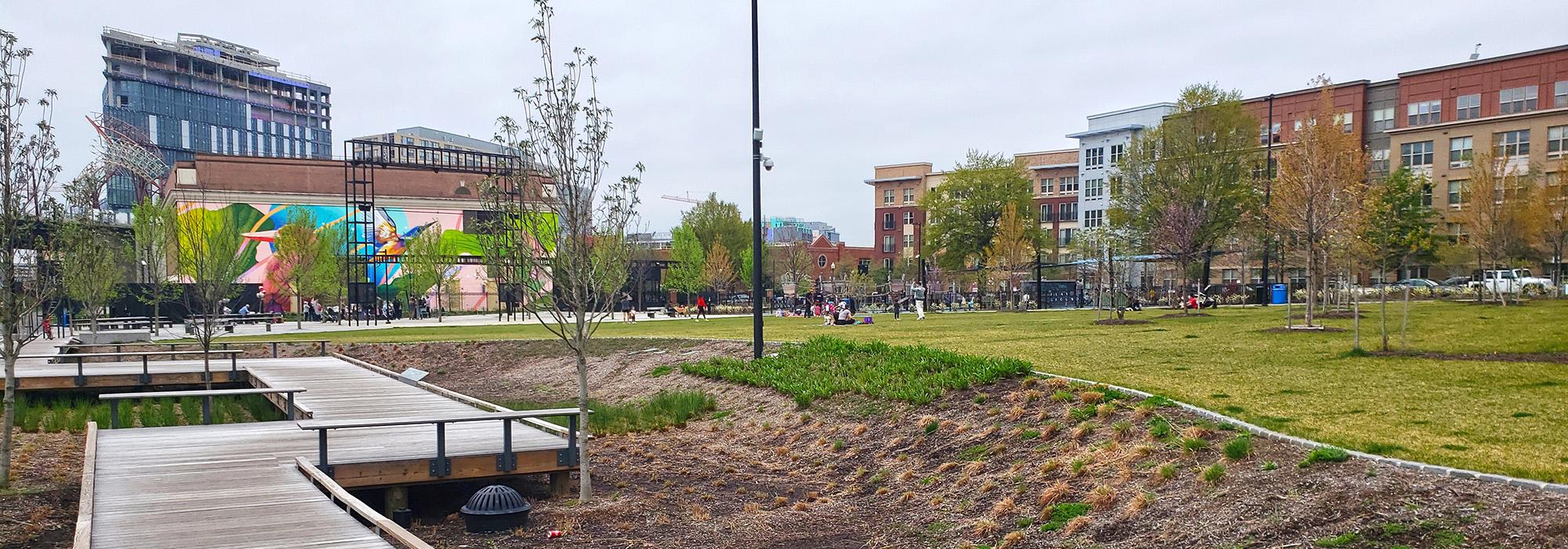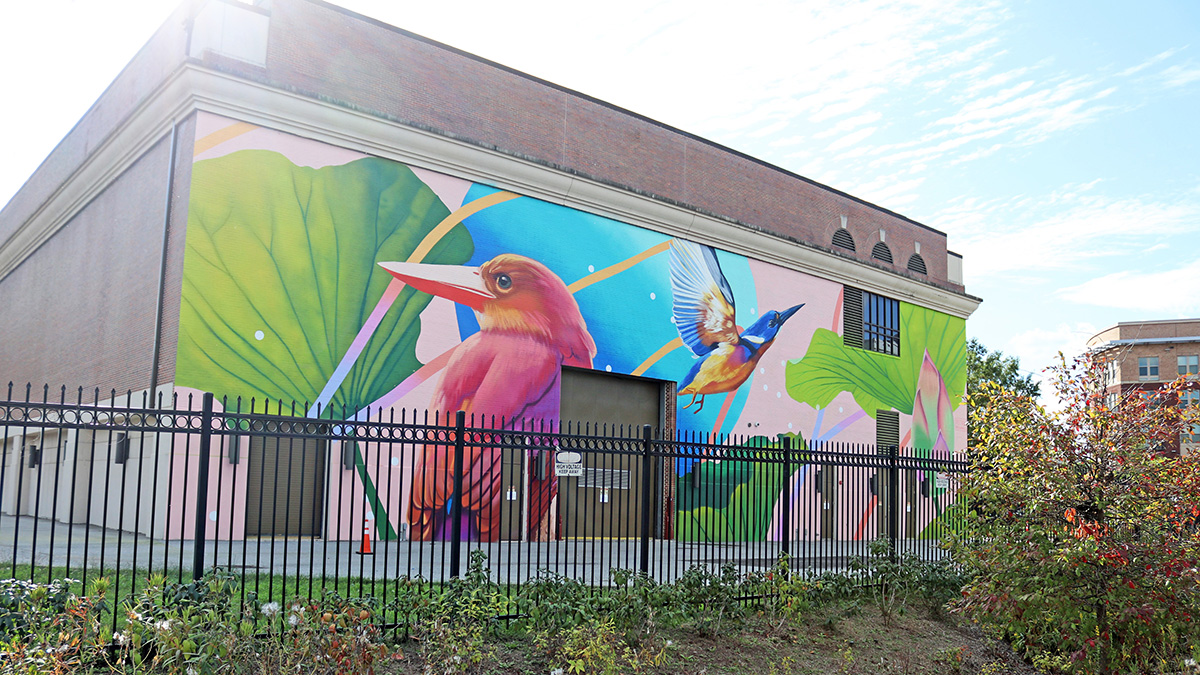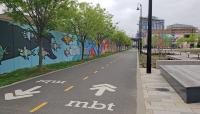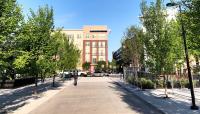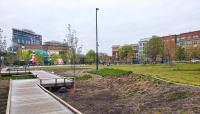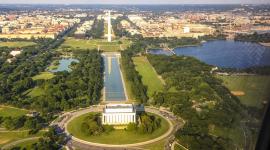Historically a rail yard, this 2.5-acre site was conceived as a park in 2012 by Washington, D.C.’s NoMa Business Improvement District (BID) as part of a broad effort to increase public green space within this dense, formerly industrial area. With a grant from the city, the BID purchased the lot in 2013. The NoMa Parks Foundation led the development and engaged landscape architects Nelson Byrd Woltz to design the park, which was completed in 2019.
Sited just off the Metropolitan Branch Trail, a rail-to-trail network spanning 5.5 miles through Washington, D.C., and Maryland, and with close access to public transportation, the park is easily accessible to pedestrians, cyclists, and commuters. A large, open lawn is surrounded by more active zones, including an enclosed playground, a dog park, and pedestrian connections to the Metropolitan Branch Trail. The site’s industrial history required remediation of site soils, a process that included removing and replacing soil as well as implementing phytoremediation of soils. A meadow planted with Indian mustard aids in the remediation of the soil’s metal contaminants, while native soft rush and butterfly weed planted alongside improve bioretention and rehabilitate the site’s insect ecosystem. The park’s name was selected by public vote and honors a formerly enslaved educator, advocate, and entrepreneur in Washington, D.C. Alethia Tanner Park was dedicated on June 25, 2020.



